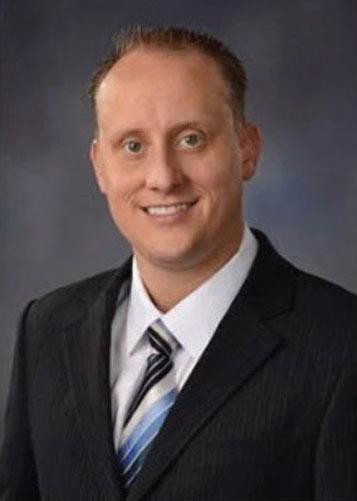Internet Expansion Project in Winlock Enters Engineering Phase
By the Economic Alliance of Lewis County
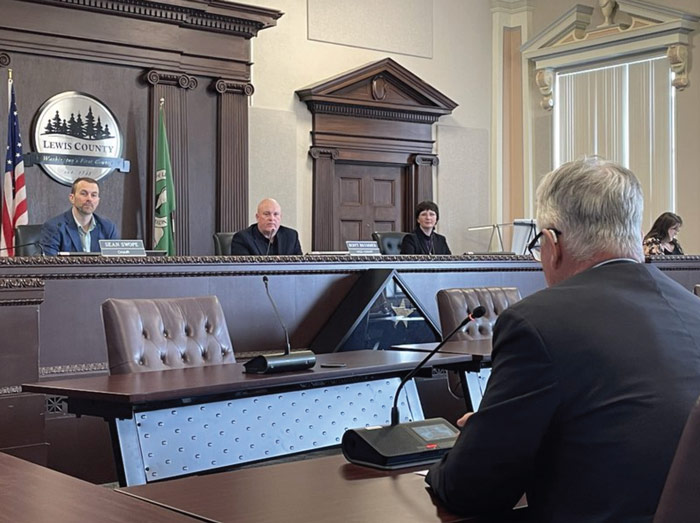
Using a $23.5 million competitive grant it secured from the Washington State Broadband Office, Lewis County launched efforts to extend internet service to more than 2,300 homes and businesses in the Winlock area. ToledoTel will contribute up to $2.3 million as the county’s partner in this major infrastructure project.
ToledoTel is leading the construction of the broadband fiber optic network. The biggest news is the project is now underway with engineering in full swing.
“In the next few weeks, locals will see Vantage Point Engineers in town, finalizing the project specifications before construction starts in the late fall,” Merten said. “With a solid start this year, we should have this project completed late next year with customer installations starting in the summer of 2024.”
At the completion of the project, which is expected to run through 2024, the county will own the broadband infrastructure. ToledoTel will use the fiber optic lines to connect businesses and homeowners to internet service.
Lewis County PUD Awarded $12 Million Grant
Funding Will Bring Broadband to Bunker Creek Service Zones
By the Economic Alliance of Lewis County
The Lewis County Public Utility District (PUD) was recently awarded a $12 million grant from the Washington State Broadband Office (WSBO) to bring fiber and broadband to the Bunker Creek service zones.
This project will serve 1,714 residential and 203 commercial customers in the rural and broadband unserved communities in west Lewis County.
“We are excited to receive the Bunker Creek area grant, an important part of Lewis County PUD’s promise to bring high speed internet to underserved communities in Lewis County and delivering on our Board’s vision,” said PUD General Manager David Plotz.
This project will include 108 miles of new fiber optic cable through a mixture of underground and overhead fiber optic and electronic equipment west of Chehalis along Highway 6, extending both north and south of Highway 6 in the vicinities of Ceres Hill and Crego Hill.
“The high costs of deploying broadband infrastructure have made it difficult for internet service providers to offer reliable and affordable broadband internet to rural areas,” said Northwest Open Access Network’s (NoaNet) Senior Executive Director of Infrastructure Strategy, Chris Walker. “However, through these broadband funding grants and the leadership provided by Lewis County PUD we are addressing these issues and solving real problems.”
The network will offer a Gigabit per second (Gbps) symmetrical connection speeds with the capacity to serve up to 10 Gbps to residential, commercial, and industrial customers that may require such speeds.
Construction is expected to start in late summer 2024.
The Washington State Broadband Office announced over $121 million in grants for 19 broadband construction projects that will deliver reliable, high-speed internet access to unserved and underserved communities across the state
“Broadband access is essential infrastructure, providing a critical gateway to education, health care, social and economic opportunities,” said Washington Commerce Director Mike Fong. “This funding is the next significant step toward our goal to have high-speed internet access available to every Washington resident and business.”
Demand for the grants exceeded available funds by 261% — 50 different projects requested more than $316 million.
The projects conditionally awarded funding are:
- Franklin County PUD No. 1 – $4.9 million for the Connell and Basin FTTH project.
- Grays Harbor PUD No. 1 – $6.9 million for the Grays Harbor South Elma, Porter and Cedarville Broadband project.
- Jefferson County PUD No. 1 – $6 million for the Inbetweens Fiber project.
- King County – $1.8 million for the King County, Ziply to Duvall project.
- Kittitas County – $11.4 million for theKittitas County WSBO 2022 project.
- Lewis County PUD No. 1 – $12million for the Bunker Creek project.
- Lincoln County – $9 million for theDeer Meadows and Seven Bays FTTxproject.
- Mason County PUD No. 3 – $3.6million for the CloquallumCommunities Rural Broadband FiberExpansion project.
- Okanogan County Electric Co-Op –$12 million for the Okanogan CountyConnect project.
- Orcas Power and Light Co-Op:$6million for the Outer Islandsproject.
$3.9 million for the Orcas IslandEast project.
$3.4 million for the San JuanIsland project.
$1.2 million for the Orcas IslandWest. - Port of Skagit County – $8 million forthe Bow Outlying Areas FTTx project.
- Port of Whitman County – $1.1million for the Port of WhitmanFTTx project.
- Spokane Tribe – $3.4 million forthe Spokane Tribe HWY 231 FTTHproject.
- Tri County Economic DevelopmentDistrict – $12 million for the CentralStevens County Hybrid Broadband project.
- Whatcom PUD No. 1 – $3.2 millionfor the Point Roberts FTTx project.
- Yakima County – $11.3 million for theYakima County WSBO 2022 project.
Funding announced Tuesday is partof the state’s investment of the federal Coronavirus Capital Project Fund, and continues the Washington Legislature’s commitment to connect communities with little or no reliable, affordable broadband service. Awards are conditional on the receipt of federal funds.
“These grants will provide initial service availability to 14,794 end users located across the state, in communities as diverse as the San Juan Islands, Kittitas County and the Spokane reservation,” said Broadband Office Director Mark Vasconi. “Unfortunately we could not fund all who applied, but we are pleased that this round of grants, as well as future funding efforts administered by the Washington State Broadband Office, will bring us closer to our goal of ensuring that all Washingtonians have reliable access to broadband service.”
Lewis County PUD is a community-owned, locally governed utility providing power services and telecommunications infrastructure to approximately 35,000 customers throughout most of Lewis County and adjacent communities.
New $800M Sustainable Aviation Fuel Plant Planned for Washington State
By Dominic Gates, Seattle Times Aerospace Reporter
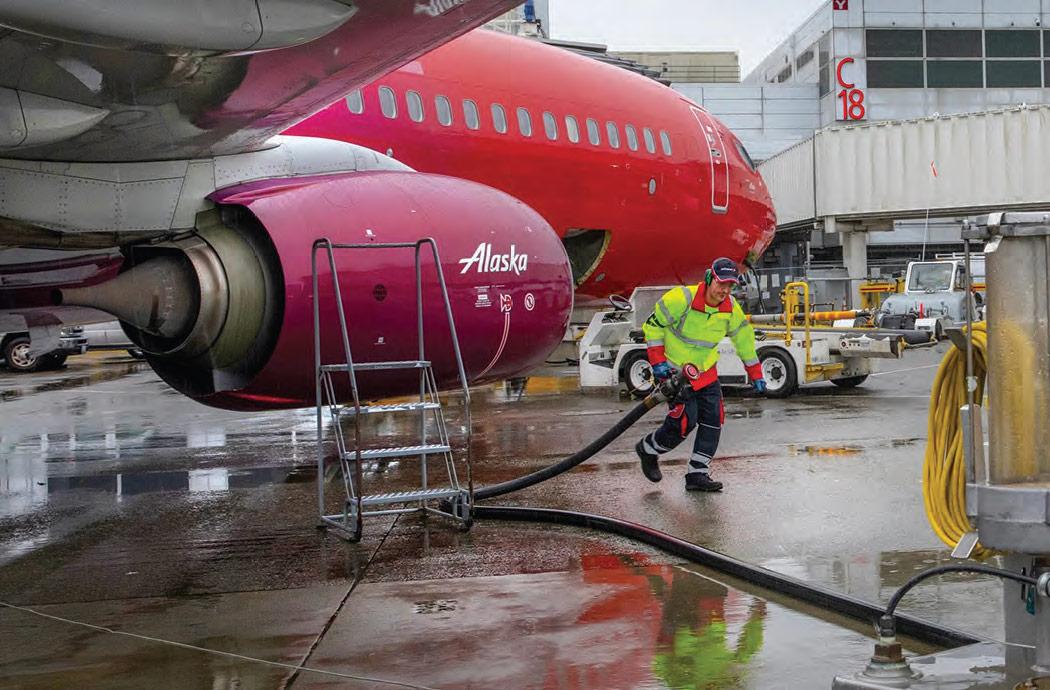
Dutch company SkyNRG has chosen Washington state to locate a major new biogas plant that will produce sustainable aviation fuel — a key part of the airline world’s push to decarbonize flying.
In an interview Wednesday on the sidelines of a Boeing conference on aviation sustainability in Renton, SkyNRG CEO Philippe Lacamp said he expects the plant to be operational by 2028 or 2029. Its construction will provide about 600 jobs, and running it thereafter will provide about 100 permanent new jobs, he said.
Previously SkyNRG, which has its U.S. office in Bend, Oregon, had said it was looking for a location somewhere in the Pacific Northwest. Lacamp said new state legislation signed this month by Gov. Jay Inslee that provides sustainable aviation fuel, or SAF, subsidies and speeds permits for plant construction tip the scale for Washington.
The legislation “positions Washington state as the most attractive, most supportive state for SAF,” he said. “It’s the most generous state in the nation now.”
SkyNRG has been studying several potential locations in the state but Lecamp declined to identify them pending full “engagement” with the local communities. “We want to make sure that we’re a good neighbor,” he said.
The project to produce about 90,000 metric tons of SAF per year, about 30 million gallons, will require a huge investment of between $600 million and $800 million, he added.
Lecamp said he’s confident SkyNRG will nail down the equity and debt financing to cover that as the global aviation industry mounts a big push to reach net zero carbon emissions by 2050 — with large-scale SAF production accounting for fully 65% of the planned reduction.
“We see these technologies as being absolutely essential for the ongoing development of the aviation industry in terms of 2050 targets,” Lecamp said. “We have confidence that they can be financed.”
“There is capital available, even in the current macroeconomic situation,” he added. “There is a willingness to provide the capital.”
A bill sponsored by state Senate Majority Leader Andy Billig, D-Spokane, creates tax credits that will provide subsidies of up to $2 per gallon for SAF, which is 2 to 5 times more expensive than regular jet fuel that currently costs about $2.17 per gallon.
A separate bill will accelerate permitting and environmental review for construction of clean energy plants.
“This is what we hoped would happen,” Billig said Thursday. “It’s rewarding to see this bill pay dividends for the state so quickly.”
Enormous Challenge to Produce Enough SAF
For Wednesday’s aviation sustainability conference in Renton, Boeing brought together leading representatives of airlines, Wall Street financiers, global aviation regulators and government policymakers to discuss the challenge of aviation meeting its goal to decarbonize by 2050.
Aviation today contributes about 2.5% of worldwide carbon emissions, a relatively small percentage but one expected to grow as air travel expands around the globe.
Because of the huge energy intensity required to haul hundreds of people safely across the skies, flying is one of the most difficult modes of transportation to decarbonize.
Electric batteries to power bigger airplanes are impractical, as they’d be too heavy.
The industry’s plan for net zero by 2050 includes switching out older planes flying today for much more efficient ones and eventually coming up with electric, hybrid-electric and hydrogen-powered alternatives for smaller airliners.
However, the bulk of the reduction is planned to come from using SAF, a hydrocarbon fuel that performs exactly like the kerosene-based fuel in current jet engines but is sourced from a variety of renewable feedstocks instead of from fossil fuels.
This transition to decarbonized flying will be costly, as air travelers will discover in the years ahead, because SAF is expensive to produce.
Willie Walsh, director general of the International Air Transport Association, or IATA, warned via video conference from Geneva on Wednesday that airlines will have to pass along the extra cost of SAF in higher ticket prices.
Before we get there though, the biggest issue is that, after years of talk about developing SAF, there is precious little actually produced.
Last year, less than 0.1% of the fuel used in airplanes worldwide was SAF. Just two producers supply SAF commercially in the U.S.
World Energy and Neste last year provided less than 16 million gallons of SAF made from cooking oil and animal fats to Los Angeles and San Francisco airports. That was the total U.S. production.
For perspective, United Airlines Chief Sustainability Officer Lauren Riley said United uses 4 billion gallons of fuel a year.
The White House has set goals to produce 3 billion gallons of SAF per year by 2030, and 35 billion gallons per year by 2050.
Going from almost nothing to producing the required quantities of SAF is daunting.
“We recognize that this is going to be incredibly challenging, but it is achievable,” IATA’s Walsh told the conference. “And we are absolutely determined to do everything we can to achieve that goal.”
Chris Raymond, Boeing’s chief sustainability officer, said in an interview that failing to produce SAF at large scale could stunt the growth of aviation as governments impose limits on carbon emissions.
“That is the threat that sits out there,” Raymond said.
Boeing is using its clout to try to get movement. It partnered with SkyNRG specifically by committing in 2021 to the advance purchase of SAF from its facility here for use in Boeing flight tests and other operations.
Boeing also lobbied in Olympia for the passage of the clean energy bills to support SAF production.
And Raymond said Boeing union leader Jon Holden, District 751 president at the International Association of Machinists, played a strong role in convincing the Legislature to support the bills.
“The legislation positions Washington state as the most attractive, most supportive state for SAF. It’s the most generous state in the nation now.”
Philippe Lacamp, CEO of Amsterdam-based SkyNRG

Philippe Lacamp, CEO of Amsterdam-based SkyNRG
SkyNRG’s Ambitions
Nascent industry that it is, SAF production is now being boosted to life by government support in Europe and the U.S. — with California and now Washington leading the way here.
Several different chemical mechanisms are being developed to produce the fuel from various carbon sources, which are referred to as “feedstocks.”
Production from used cooking oil and fats is the most established pathway, but scaling that to the required levels has limits. As Angela Wilkinson, CEO of the World Energy Council, put it, “There’s only so much fried chicken people can eat.”
Since its founding in 2009 — spun off from a study done for Dutch airline KLM, which is a shareholder in the company — SkyNRG has been focused entirely on developing SAF technology.
Yet it is essentially still a startup, with only about 50 employees and just three of those in the U.S.
Still, it has partnerships with Boeing and with major airlines and it has huge ambitions.
In Holland, Lacamp said it is closing in on a final investment decision on a plant producing SAF via the used oils and fats pathway.
But the one it plans for Washington state will use a different chemical pathway: It’s dubbed “alcohol-to-jet” and consists of fermenting carbon waste to produce ethanol that is then converted to fuel.
The feedstock will be waste gasses, chiefly methane, derived from agricultural or municipal landfill waste.
“Think around dairy farms, for example,” Lacamp said.
Yes, he means cow farts and cow manure. “It can be captured under canopies. There’s all sorts of ways dairy farms find of capturing biogas,” he added.
Even more ambitiously, SkyNRG plans another plant in Holland using a third, different pathway — the greenest SAF of all — called “power-to-liquid,” which uses renewably sourced electricity to produce “green hydrogen” that is then combined with carbon dioxide captured from the atmosphere to produce fuel.
These latter two SAF pathways are new and in development. They’ve been shown to work in a lab but have never been used on an industrial scale.
“We are a novel technology and that comes with a level of risk,” Lecamp said. “Matching the capital with the appetite to accept a level of risk which is higher than what you now see in wind turbines and solar farms, that is more challenging.”
For investors to take that risk with a huge amount of capital, they must be convinced of a long-term market for the SAF product.
It will require more than noble declarations of intent from the aviation industry.
Joe Shanahan, managing director, head of aviation at investment bank Citi, said investors will hesitate until airlines step up and sign long-term contracts to buy the fuel, despite the premium price.
The Washington state per-gallon subsidy could prove critical for that to happen.
In 2021, Alaska Airlines agreed to work with SkyNRG and Lecamp said it’s “one of many airlines keen to take part” by committing to buy SkyNRG’s SAF.
All the larger airlines flying out of Seattle-Tacoma International Airport, including Delta and Southwest, could equally have an interest in locally produced SAF.
The future of aviation is being gambled on this technology play. Lacamp estimated that 750 SAF plants will have to be built at enormous cost to meet the capacity targets of just the U.S. and the European Union.
The one planned for Washington state will be leading edge, he said.
“When you’re doing the first-of-a-kind facility, you’re going to learn a lot,” said Lecamp, adding that the lessons will then be applied to replicate similar plants around the world.
“From the very beginning, this company has been focused on sustainable aviation fuel,” Lecamp said. “We understand the feedstocks. We understand the technologies. We know that it has to happen for aviation to reach its 2050 net zero target. And we’re all in on that.”
Alliance Grant Manager Assists Businesses With Funding
Amy Buzzard Brings Wealth of Experience in Helping Build Up Companies
By the Economic Alliance of Lewis County
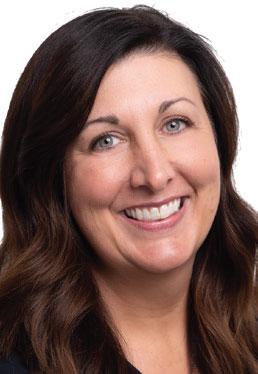
Amy Buzzard, grant manager for the Economic Alliance of Lewis County, is an expert in helping businesses and nonprofits acquire grants.
A past president of the Centralia School Board and founder of Ignite & Rise, she brings creative and innovative solutions to problems plaguing the community.
“We bring hope to businesses and nonprofits looking for ways to bring their visions to fruition,” said Ignite & Rise co-founder Amy Buzzard.
Ignite & Rise’s clients include the Lewis County Public Facilities District, the Centralia Community Foundation, Twin Cities Sports Commission, Centralia School District, city of Winlock, and the Historic Fox Theatre Restoration.
Now she brings that experience to The Alliance.
For example, she has successfully assisted the Centralia School District and The Centralia Community Foundation in acquiring several grants, including a transformative $2.2 million grant from TransAlta. Now she is helping business from her post at The Alliance.
“The Economic Alliance of Lewis County is here to assist our members in finding grants to suit your business needs,” Buzzard said. “We are available for a consultation and will provide a comprehensive list of grants to help you reach your goals.”
She can assist businesses land the following grants:
Commerce, Industrial Symbiosis Request for Proposal
commerce.wa.gov
The Department of Commerce is initiating this Request for Proposals (RFP) to solicit proposals from those qualified and interested in participating in a grant program to reduce, reuse, or eliminate waste that benefits Washington’s circular economy.
Commerce, Open Procurement Small business residency Network
commerce.wa.gov
This is an exciting new procurement opportunity to leverage grant seed funding from Commerce for the establishment of an Small Business Resiliency Network Credit Building Pilot Program to provide capital to build credit for small businesses and entrepreneurs.
U.S. Department of Energy
grants.gov
This provides cooperative agreements to nonprofit and for-profit entities, and government agencies for research and development projects to integrate clean energy into the power grid system. Applicants are required to submit a letter of intent and complete required registrations prior to submitting a full application.
Projects funded will address the emerging challenges and opportunities for grid planning and operation engineers and technicians arising from the power system’s transition to variable renewable energy sources and inverter-based power electronic grid interfaces. New state-of-the-art planning and operations tools will enable solar energy to be more optimally and reliably integrated and utilized within the electric power grid, providing Americans with more cheap and secure sources of clean energy.
Emerging Brands Alliance Grant
emergingbrandalliance.org
Grant of $50,000 to purchase equipment to advance packaging and processing. The purpose of the program is to help develop the manufacturing and packaging capacity of the successful applicant. Eligible applicants are those that produce and distribute a consumer packaged goods in the U.S. or Canada.
USDA Socially Disadvantaged Groups Grant
rd.usda.gov
The primary objective of the Socially Disadvantaged Groups Grant program is to provide technical assistance to socially-disadvantaged groups through cooperative development centers. Each fiscal year, applications are requested through a Notice published in the Federal Register and an announcement posted on Grants.gov.
To contact Amy Buzzard for more information and assistance on these grants and others, contact her at The Alliance at 360-748-0114.
Chair’s Corner
Washington State, Lewis Need More Affordable Housing
Agencies Continue to Make it More Expensive to Build; Hopefully Legislative Changes Will Help
By Luke Moerke
Chair – Economic Alliance of Lewis County
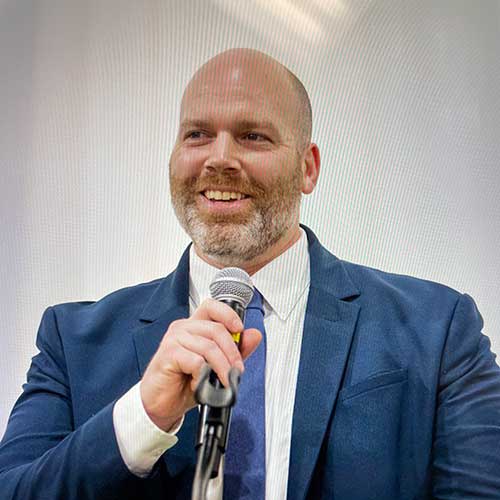
Luke Moerke
Chair – Economic Alliance of Lewis County
After a quick one-day Special Session by the state Legislature on Tuesday, where they attempted to fix the problem with illegal drug possession and usage, the 2023 political dance in Olympia is done for the year.
For Lewis County, I am interested in what our politicians have done these past four-plus months in our state capitol to help us and most of Western Washington deal with an acute housing shortage.
It is clear there is a need for our rules and regulations to ease the difficulties of developing housing.
According to the Washington State Department of Commerce, our state will need 1.1 million new homes in the next two decades, with the majority of the needs for those at the lowest income levels.
Put another way, the state will need to create 50,000 new housing units each year to keep up with expected population growth.
In Lewis County, according to the Lewis County Housing Initiative, the current housing climate is distressing for those seeking a home.
Housing difficulties by the numbers:
Single family house price in 2012: $150,000
Single family house price in 2021: $350,000
48% of renters pay more than 30% of their income on housing
24% of renters pay more than 50% of their income on housing
From 2012 to 2021, there has been a 69% decrease in the supply of homes for sale
There is a huge potential for the need for new housing over the next three to five years, based on economic projects that are in the works. Lewis County has a possible 400 to 500 new jobs coming in the next three to five years.
Where Will They Live?
Sen. John Braun, a Republican leader from Chehalis, sees the need. He is starting the development of Raindrop Properties, with hundreds of acres above Yard Birds. Braun wants to develop the hillside above Yard Birds into a retail zone up front, with up to 2,500 houses above.
“This may take 10 or 20 years, but this is why we have the housing problem we have right now. Ten or 20 years ago, people weren’t looking at, ‘How are we going to build the houses for you?’” Braun said in an interview with The Chronicle.
Braun’s property holdings also include the old Elks Lodge also up on the hill.
His goal? Build “sufficient homes” with a range of prices for the coming housing needs. He’s doing his part; he’s also a shrewd businessman. I wish him well.
I hope recent laws passed in Olympia this past session will help.
Recent Legislation:
Legislators voted for more than $1 billion for the 2023-25 biennium for housing construction. The politicians on both sides of the aisle know the need. They introduced more than 50 bills addressing housing.
• HB 1110 allows duplexes, triplexes and fourplexes to be developed on lots zoned for single-family homes.
• HB 1293 blocks cities and counties from pushing overly restrictive reviews for exteriors of new developments, and also expedited permitting for low to moderate income housing units.
• HB 1337 allows for cities and counties within urban growth areas to approve accessory dwelling units in single-family residential zoning.
• SB 5290 might be my favorite new law. It speeds up permitting for housing developments. Governments must respond within 20 days of receiving an application.
Growth is Coming
There are several multi-family projects going on in the Twin Cities, more than I can ever recall happening at the same time. This is good progress, but we need to keep thinking forward.
The county is leading an effort to see about modifying zoning that would still aallow more housing in rural areas. Eric Eisenberg, Lewis County Housing and Infrastructure Specialist, is leading this charge, and recently presented some ideas for this at a Chamber event.
These are all good, and we here in Lewis County should keep pressing forward to think long range.
However, we are fighting the state as well. As we hear the state protest that we need more affordable housing, the agencies are at the same time, making it more expensive to build.
Case in point, the 2021 Energy Code changes. If legislators would concur on this, we could amend current law to ease restrictions.
Our state is one of the most restrictive in the country when it comes to energy code compliance. We’ve basically taken most of the low lying fruit, and changes from here are only going to be more cumbersome and more cost prohibitive. Governing agencies often don’t think about those nasty little “unintended consequences” but that is already happening in many areas of building as a result of stricter and stricter code regulations.
It’s a complex web. Perhaps the legislative laws will help.
On a basic level, I believe it all comes down to us. If enough people — more people — become involved, starting by simply talking about our housing needs, finding themselves engaged in solutions, we might just ease the coming housing crunch.
•••
Luke Moerke is chair of the Economic Alliance of Lewis County, and owner of Exodus Engineering.
Member Spotlight
Ignite & Rise: Lighting a Way to Your Future
New Member of the Economic Alliance of Lewis County Offers Professional Grant Writing, Editing And Planning For Businesses And Nonprofits
By The Economic Alliance of Lewis county
Shane Wood
Business Services Manager
Commercial Lending Specialist
Shane has worked for 14 years at TwinStar Credit Union and currently does commercial accounts and loans there. He serves on a variety of boards and committees in the Lewis County community. He is happily married to wife Stephanie and they have two beautiful kids, Kyler and Kyndal. In his free time Shane enjoys traveling and camping with his family. Their favorite vacation spot is Disneyland. Shane also volunteers as a coach for his kids’ teams.
Q: How long have you been a member of the Economic Alliance of Lewis County?
A: TwinStar has been an Alliance member for two years now and I have been on the board for about 10 months.
Q: Why did you join The Alliance?
A: I believe The Alliance makes a tangible difference in the community by supporting both small businesses and bringing large businesses to the community that provides the jobs and taxes we need to thrive in Lewis County.
Q: What is a key for the success of your business?
A: Relationships are the key. If we see each other as partners to better our community it will bring synergy and multiply the positive changes we can make together.
Q: What do you enjoy most about volunteering?
A: Working with others. When we join together we can accomplish much more than we ever could alone.
Q: What do you love most about your industry?
A: Helping others. I am not just an income producer for the credit union. I am a consultant to my business members to help them make their business operations as simple and as fluid as possible.
Q: How do you define success?
A: Success is defined by the difference you make in other’s lives. It is not about what we gain for ourselves but what we can contribute to those around us. The more I help others the more successful I feel.
Q: Who inspires you?
A: I am inspired most by people who display humility and service to those around them. One person I have seen as a model my whole life is Dr. Steve Ash. No one has it all figured out, and if we can all realize that and come together in spite of our shortcomings to work together, then we will make the world a much better place.
Q: What is one thing, either industry-related or not, you learned in the last month?
A: I would say the biggest thing I have learned, maybe not just in the last month but also the last couple years, is that change is inevitable but if we allow it to, it can make us stronger and wiser.
Q: What’s the last book you read?
A: I spend most of my reading time reading the Bible. Other than that not much of an avid reader.
Q: What is your favorite meal?
A: Papa Pete’s Taco Pizza
Q: What do you do for pleasure outside of running your business?
A: I am a family man. Spending time with my kids and working on my home. I also coach my son’s baseball team. For fun I like to golf and occasionally play a poker game with friends.
Q: What is the favorite car you have ever owned?
A: 1991 Nissan Sentra, SE-R. Back in its day it was considered one of the best “sleeper” cars you could buy. I had a group of friends and we all owned one.
Q: What is something about you (a fun fact) that not many people know?
A: I love techno and trance music.
Property Spotlight
273 Maurin Road, Chehalis — Acres: 37.1
Features:
- Direct access to Interstate 5 interchange
- Access to rail
- Build-to-suitavailable
Utilities
- Zoning: Industrial
- Power: Lewis County PUD
- Water: City of Chehalis
- Sewer: City of Chehalis
- Natural Gas: Puget SoundEnergy
For information on this property and others available throughout Lewis County (or to list your industrial/commercial property for sale), contact Economic Alliance of Lewis County External Relations Manager Eric Sonnenberg at [email protected] or 208-206-5407
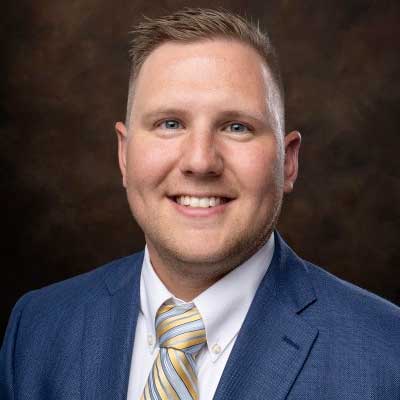
Eric Sonnenberg
Economic Alliance of Lewis County External Relations Manager


